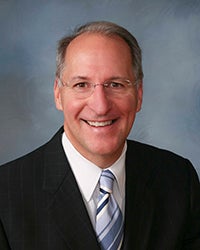Use surplus to improve competitiveness
Published 4:58 pm Saturday, December 19, 2015
Guest Column, By Doug Loon
The recent forecast of a $1.87 billion budget surplus is a perfect backdrop to our season of holiday cheer. State coffers continue to grow on the strength of the hard work and success of Minnesota employers and employees.
By all accounts, tax relief will be center stage when the 2016 Legislature convenes in March. The budget surpluses the state has enjoyed since the permanent $2 billion tax increase in 2013 signal it’s time to bring taxes on Minnesota employers to a more competitive level.
The Minnesota Chamber of Commerce leads the statewide United for Jobs Coalition, which represents more than 75 local chambers of commerce and business associations including the Albert Lea-Freeborn County Chamber of Commerce. We recommend the governor and the 2016 Legislature focus on reducing the state business property tax, which will benefit Main Street businesses in every community. Also left undone from the 2015 Legislature was transportation funding.
By law, one-third, or $665 million, of the surplus must be transferred to the budget reserve. The remaining $1.2 billion surplus offers ample opportunity to provide sustained and strategic investments in roads, bridges and transit systems and provide meaningful tax relief.
Unlike homeowners and most other properties that pay only local property taxes, businesses also pay the state levy that goes into the general fund. This state property tax is about one-third of a business property tax bill.
Property taxes for Minnesota businesses are among the highest in the nation — second highest for rural properties and sixth highest for metro properties. Minnesota business property taxes exceed some of our neighboring states by more than 200 percent.
Most Minnesotans may dismiss higher business property taxes as out of sight and out of mind. The taxes don’t come of their pocketbooks, so why be concerned? Higher taxes are ultimately paid by consumers in higher prices for goods and services. Higher taxes limit what’s available for employee raises, reinvestment in the business, expansion and potential job growth.
From a small business restaurant owner in Rochester: “I can remember when property taxes were manageable, but now they represent our sixth largest cost. At one of our facilities we have to do 20 weddings a year just to pay the property tax, and this is 25 percent of our weddings. We offer free meals to our employees along with life insurance. That is all being looked at to get cut because of rising property taxes and the Affordable Health Care Act. ”
Competitiveness matters. Minnesota regularly wins high marks for its quality of life, and we celebrate that. Why not start to lower our high tax burdens that hinder the ability of Minnesota businesses to compete? Getting off the top of the “top 10” tax lists will sustain and build our state’s economy.
Minnesota employers want to live and work in this state, but there’s a distinct difference between simply staying here and investing to help the economy change and grow. Our favorable “quality of life” rankings deserve a collective “high five. Look beneath the headlines, however, and there are troubling facts. The costs for doing business are among the highest in the nation.
Economic growth will ultimately come from a strong business climate that encourages employers to reinvest in Minnesota. That benefits employers and employees alike.
Doug Loon is president of the Minnesota Chamber of Commerce, which leads the United for Jobs Coalition.


